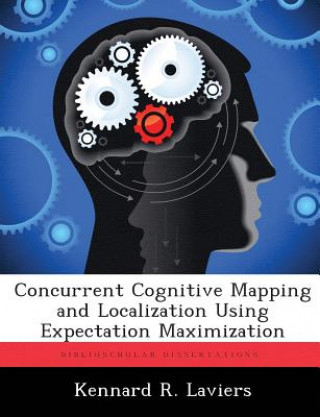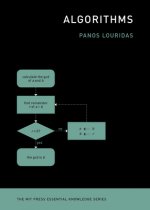
Code: 08243082
Concurrent Cognitive Mapping and Localization Using Expectation Maximization
by Kennard R Laviers
Robot mapping remains one of the most challenging problems in robot programming. Most successful methods use some form of occupancy grid for representing a mapped region. An occupancy grid is a two dimensional array in which the a ... more
- Language:
 English
English - Binding: Paperback
- Number of pages: 102
Publisher: Biblioscholar, 2012
- More about this

You might also like
-

Poetical Works of Sir Walter Scott.
31.11 € -19 % -

Secret Terror
13.12 € -18 % -

Exam Prep for Thinking Mathematically by Blitzer, 4th Ed.
40.30 € -

Sir Gibbie. a Novel.
36.57 € -

Mystery of the Golden Amulet
27.98 € -

Don't Fall Off the Bicycle
16.16 € -

Soil Ecology
62.63 €
Give this book as a present today
- Order book and choose Gift Order.
- We will send you book gift voucher at once. You can give it out to anyone.
- Book will be send to donee, nothing more to care about.
More about Concurrent Cognitive Mapping and Localization Using Expectation Maximization
You get 150 loyalty points
 Book synopsis
Book synopsis
Robot mapping remains one of the most challenging problems in robot programming. Most successful methods use some form of occupancy grid for representing a mapped region. An occupancy grid is a two dimensional array in which the array cells represent (x, y) coordinates of a cartesian map. This approach becomes problematic in mapping large environments as the map quickly becomes too large for processing and storage. Rather than storing the map as an occupancy grid, our robot (equipped with ultra sonic sonars) views the world as a series of connected spaces. These spaces are initially mapped as an occupancy grid in a room-by-room fashion using a modified version of the Histogram In Motion Mapping (HIMM) algorithm extended in this thesis. ... Using this representation makes navigation and localization easier for the robot to process. The system also performs localization on the simplified cognitive version of the map using an iterative method of estimating the maximum likelihood of the robot's correct position. This is accomplished using the Expectation Maximization algorithm. Treating vector directions from the polygonal map as a Gaussian distribution, the Expectation Maximization algorithm is applied, for the first time, to find the most probable correct pose while using a cognitive mapping approach.
 Book details
Book details
Book category Books in English Society & social sciences Education
60.01 €
- Full title: Concurrent Cognitive Mapping and Localization Using Expectation Maximization
- Author: Kennard R Laviers
- Language:
 English
English - Binding: Paperback
- Number of pages: 102
- EAN: 9781288313570
- ISBN: 9781288313570
- ID: 08243082
- Publisher: Biblioscholar
- Weight: 195 g
- Dimensions: 246 × 189 × 5 mm
- Date of publishing: 19. November 2012
Trending among others
-

Cambridge IGCSE (R) & O Level Complete Physics: Student Book Fourth Edition
38.79 € -

Cambridge IGCSE (R) & O Level Complete Biology: Student Book Fourth Edition
39.19 € -

Cambridge IGCSE (R) & O Level Complete Chemistry: Student Book Fourth Edition
46.97 € -

geog.2 Workbook
12.52 € -

Oxford IB Diploma Programme: IB Economics Course Book
62.23 € -

Oxford IB Study Guides: Economics for the IB Diploma
44.04 € -

Cambridge IGCSE (R) & O Level Complete Biology: Print and Enhanced Online Student Book Pack Fourth Edition
51.82 € -

Oxford IB Diploma Programme: IB Theory of Knowledge Course Book
62.94 € -

KS3 Maths 10-Minute Weekly Workouts - Year 7
8.07 € -8 % -

Powerful Teaching: Unleash the Science of Learning
26.26 € -26 % -

ESL/ELL Teacher's Survival Guide: Ready-to-Use Strategies, Tools, and Activities for Teaching En glish Language Learners of All Levels, 2nd Edition
29.90 € -21 % -

Donny's Unauthorized Technical Guide to Harley Davidson 1936 to Present
46.37 € -19 % -

Embodied Teen
21.81 € -16 % -

(ISC) SSCP SG & SSCP Practice Test Kit, 3e
65.06 € -28 % -

Algorithms
15.15 € -9 % -

AQA A Level Biology Revision Guide
25.55 € -6 % -

UKCAT For Dummies
23.23 € -28 % -

Teach Reading With Orton-gillingham
18.88 € -10 % -

OET Speaking for Nurses Book 2
11.71 € -1 % -

OET Speaking For Nurses Book 1
12.92 € -

Walk Your Talk; Tools and Theories To Share Nonviolent Communication
29.49 € -

geog.1 5th edition Workbook Answer Book
56.17 € -

Motivational Interviewing: A Workbook for Change Agents
26.66 € -

New KS2 English Year 4 Foundation Grammar, Punctuation & Spelling Targeted Question Book w/Answers
8.98 € -5 % -

Cambridge IGCSE (R) & O Level Complete Chemistry: Print and Enhanced Online Student Book Pack Fourth Edition
63.14 € -

OET Preparation
9.79 € -

Blue Book of Grammar and Punctuation: An Easy- to-Use Guide with Clear Rules, Real-World Examples , and Reproducible Quizzes, Twelfth Edition
15.15 € -28 % -

Business Partner B1 Workbook
17.67 € -8 % -

Business Partner B1+ Workbook
16.86 € -3 % -

Speed and Accuracy: Multiplication
8.58 € -

KS3 Maths 10-Minute Weekly Workouts - Year 8
8.07 € -8 % -

Business Partner B2 Workbook
16.86 € -3 % -

Speed and Accuracy: Division
8.58 € -

1000 TRIOS or gapped sentences for Cambridge Advanced and Proficiency Exams
24.34 € -

Pearson Edexcel AS and A level Mathematics Statistics & Mechanics Year 1/AS Textbook + e-book
17.77 € -

Pearson Edexcel International GCSE (9-1) English Language B Student Book
50.51 € -

The End of Education
13.43 € -26 % -

Jim Trelease's Read-aloud Handbook
16.86 € -27 % -

Deep Healing and Transformation
48.39 € -

Read Write Inc. Phonics: Red Ditty Book Bag Books (Mixed Pack of 10)
74.66 € -

Imagine If...
10.90 € -23 % -

OET Reading Subtest Preparation
12.62 € -7 % -

Vol 2 Blackletter Lettering Adventures
25.45 € -1 % -

AS & A Level Maths For Dummies
17.37 € -27 % -

CompTIA Security+ Review Guide - Exam SY0-601
24.85 € -24 % -

Practical Guide on Veterinary First Aid using Homeopathy
14.84 € -2 % -

Dancing Heads
13.02 € -19 % -

Abolition of Man
18.68 € -1 % -

All About Diamonds
27.98 €
Collection points Bratislava a 2642 dalších
Copyright ©2008-24 najlacnejsie-knihy.sk All rights reservedPrivacyCookies



 15549 collection points
15549 collection points Delivery 2.99 €
Delivery 2.99 € 02/210 210 99 (8-15.30h)
02/210 210 99 (8-15.30h)